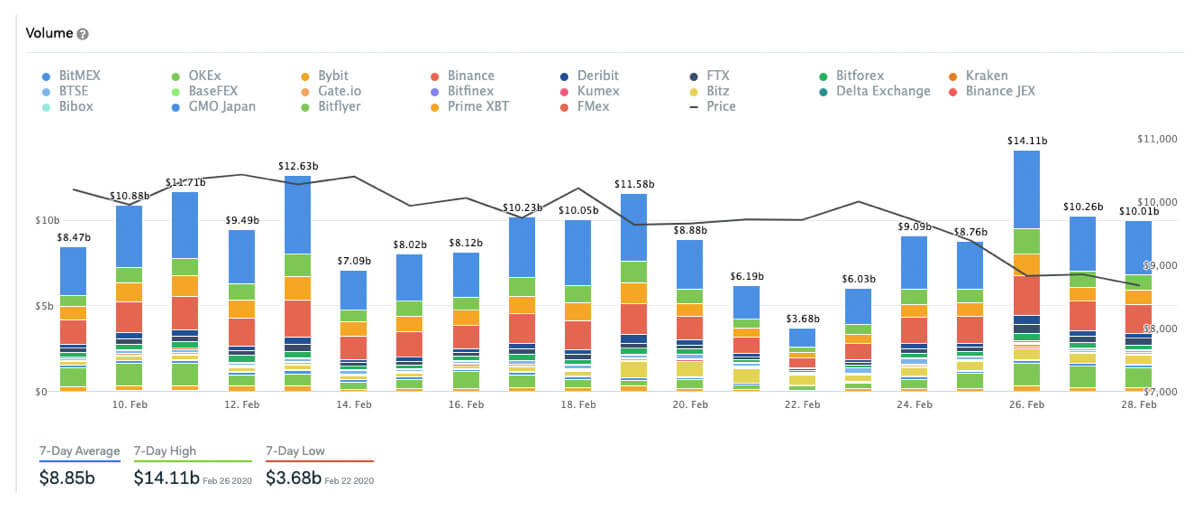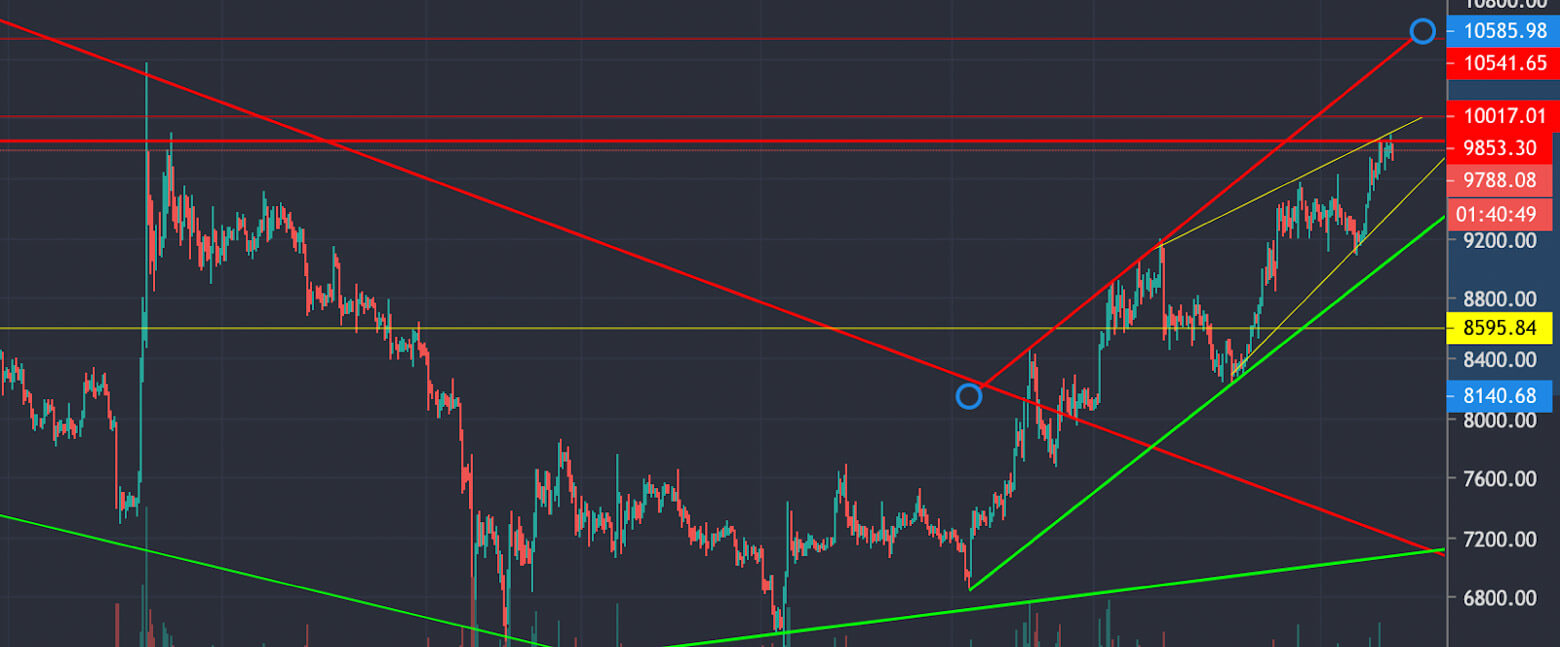2020-10-7 17:00 |
Powered by
Every week, IntoTheBlock brings you on-chain analysis of top news stories in the crypto space. Leveraging blockchain’s public nature, IntoTheBlock’s machine learning algorithms extract key data that provide a deeper dive into the major developments in the industry.
This week, we cover Bitcoin’s resilience amidst broader market volatility. As well, we go over Ethereum’s scaling plans and network insights. Finally, we dive into Aave’s token migration and the strong impact it’s had in its on-chain analytics.
Bitcoin Stays Resilient Despite Broader VolatilityIt has been an eventful October for crypto and markets overall. On October 1, BitMEX — one of the largest crypto derivative exchanges — was charged by the U.S. Department of Justice and Commodity Futures Trading Commission (CFTC) with allegedly operating an unregistered trading platform and violating anti-money laundering and know-your-customer (KYC) regulations. This led to a drop in most cryptoassets of over 5%, while Bitcoin fell by roughly 3%.
Then on October 2, Trump announced he tested positive for COVID-19, triggering a sell-off in stock and crypto markets alike. Finally, on October 6, Trump called for discussions on the stimulus package to stop until after the election. This again caused markets to drop significantly as investors were anticipating an imminent stimulus package to propel valuations further.
Due to these events, the total market cap excluding Bitcoin has dropped approximately 8% in October, based on CoinMarketCap’s data. At the same time, Bitcoin has dropped less than 2% month over month as its dominance has increased. As a result, Bitcoin has actually seen a decrease in 30-day volatility in spite of these events affecting the market.
Source: IntoTheBlock’s Bitcoin Financial AnalyticsBitcoin is currently at the second lowest 30-day volatility it has experienced all year. This resilience in light of the broader exogenous factors highlight how Bitcoin has matured as an asset. Correlations with other asset classes show a similar trend:
The table above shows the 30-day correlation coefficient (r) for the prices of Bitcoin and major global stock indices and commodities. Recall that correlations close to 1 indicate a strong statistical relationship between the two variables, while values close to 0 signal little to no correlation. Therefore, we can conclude that over the past 30 days Bitcoin has had very low correlation with other asset classes.
While news like Trump calling off talks about a stimulus package have had short-term impacts on Bitcoin’s price, its long-term appeal as a non-correlated asset has evidently gotten stronger. Ultimately, this highlights Bitcoin’s growing resilience and maturity as an asset class of its own.
Ethereum Scalability UpdateWhile Bitcoin is showing signs of maturing as an asset class, Ethereum is laying out its plans for growth. After years of research, Ethereum is currently gearing up for phase 0 of its Ethereum 2.0 upgrade. It launched the Medalla testnet in August, and it has a final testnet (Zinken) scheduled to go live on October 12 as one of the last steps prior to phase 0. Vitalik Buterin took the opportunity to clarify the next steps in scaling Ethereum and its implications on the network.
Source: TwitterAs explained by Buterin, Ethereum aims to scale through rollups — a layer 2 scaling solution — on top of sharding in phase 1. This should allow Ethereum to reach between 1,000 to 4,000 transactions per second. Moreover, at the moment, protocols built on top of Ethereum are already testing rollups at much higher transaction throughput than what is currently supported.
Scalability has been a critical issue for Ethereum in 2020 as increasing transactions have made the blockchain more expensive to use. As can be seen below, the number of Ethereum transactions is near the 2017 all-time highs.
Source: IntoTheBlock’s Ethereum Network AnalyticsThis increase in ETH transactions has led to higher fees for Ethereum users, though these have now dropped along with token prices. At the same time, the higher transaction fees have attracted more miners, who are seeing increased revenues from the fees.
Source: IntoTheBlock’s Ethereum Network AnalyticsThe Ethereum hash rate has therefore increased significantly throughout 2020 along with transaction fees, even with the imminent introduction of proof-of-stake. While miners are looking to capitalize on short-term spikes, users await Ethereum to scale and lower fees. Overall, this is a key step to encourage greater adoption and use of Ethereum decentralized applications and ERC tokens.
Aave Token MigrationWhile decentralized finance (DeFi) tokens continue to crash, fundamentals for leading protocols continue to strengthen. DeFi lending protocol Aave started the migration from the LEND utility token to its new AAVE governance token. The migration had originally been proposed in the Aavenomics token economics upgrade paper and was recently approved through governance with 100% of addresses voting “Yae,” or in favor of the proposal. LEND holders will receive 1/100 AAVE tokens for every LEND token that goes through the migration process.
The migration aims to align token holders’ incentives with the protocol’s best interests: the AAVE token protects Aave against shortfall events while rewarding through staking. Shortfall events occur when there is a deficit in the system, like the one that led MakerDAO to be involved in a $28 million lawsuit following Black Thursday.
This leads to the creation of the Aave Safety Module (SM). AAVE holders can stake their tokens in the SM and be compensated with staking rewards with an APY of approximately 11%. AAVE held in the SM then acts as a reserve protecting the protocol from unexpected losses in funds potentially stemming from liquidations, smart contract risk or oracle failure.
This does bring additional risk to users staking, who risk losing up to 30% of the assets locked in the SM in case there is a shortfall event, slashing their positions. In the initial phase, though, stakers’ positions will not be slashed, incentivizing more holders to migrate and stake their AAVE.
The anticipated protocol upgrade already had a strong impact on-chain as whales appeared eager to migrate their tokens. IntoTheBlock monitors transactions of over $100,000 to have an approximation of large and institutional investors’ activity. All of these transactions are aggregated in the Large Transactions Volume indicator. As can be seen below, LEND transactions recently reached a new all-time high on October 5:
Source: IntoTheBlock’s LEND Financial AnalyticsWith the migration process starting on October 2 at 10:00PM UTC, LEND large transactions have increased dramatically.
Using Aavewatch’s migration tracker, we can verify that these transactions indeed were to upgrade LEND tokens to AAVE tokens. Within four days, over a third of the total supply of LEND migrated to AAVE, highlighting the strong support from whales in the Aave ecosystem.
While large transactions spiked a few days after the migration, address activity picked up right away. The total number of active LEND addresses reached 2.66K, the third highest in 2020, the day after the token migration started.
Source: IntoTheBlock’s LEND Addresses StatsAdditionally, zero balance addresses — addresses that transfer out all of their tokens in a given day — spiked to over 2,000 the same day. This points to the likelihood of a large percentage of LEND holders transferring their tokens to receive the new AAVE token.
Overall, while the hype surrounding DeFi tokens seems to be settling down, leading protocols such as Aave continue to make fundamental progress. Ultimately, the token migration is set to be just a first step as Aave aligns incentives between token holders and the protocol’s security.
This article contains links to third-party websites or other content for information purposes only (“Third-Party Sites”). The Third-Party Sites are not under the control of CoinMarketCap, and CoinMarketCap is not responsible for the content of any Third-Party Site, including without limitation any link contained in a Third-Party Site, or any changes or updates to a Third-Party Site. CoinMarketCap is providing these links to you only as a convenience, and the inclusion of any link does not imply endorsement, approval or recommendation by CoinMarketCap of the site or any association with its operators.
This article is intended to be used and must be used for informational purposes only. It is important to do your own research and analysis before making any material decisions related to any of the products or services described. This article is not intended as, and shall not be construed as, financial advice.
The views and opinions expressed in this article are the author’s own and do not necessarily reflect those of CoinMarketCap.
The post Bitcoin Stays Resilient, While Ethereum & Aave Prepare for Upgrades : A Data Perspective by IntoTheBlock appeared first on CoinMarketCap Blog.
origin »Bitcoin (BTC) íà Currencies.ru
|
|







